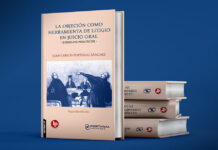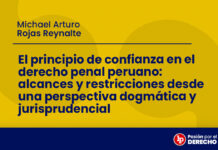Fundamento destacado: 98. El Tribunal observa que en el caso Kurt (sentencia Kurt citada anteriormente, pp. 1187-88, §§ 130-34), que se refería a la desaparición del hijo de la demandante durante una detención no reconocida, consideró que la demandante había sufrido una violación del artículo 3 teniendo en cuenta las circunstancias particulares del caso. Se refirió en particular al hecho de que era la madre de una víctima de una grave violación de los derechos humanos y ella misma la víctima de la complacencia de las autoridades ante su angustia y desamparo. Sin embargo, el caso Kurt no establece ningún principio general según el cual un familiar miembro de una «persona desaparecida» sea por ello víctima de un trato contrario al artículo 3.
Que un familiar sea una víctima dependerá de la existencia de factores especiales que confieran al sufrimiento del solicitante una dimensión y un carácter distintos de la angustia emocional que puede considerarse inevitablemente causada a los familiares de una víctima de una violación grave de los derechos humanos. Los elementos relevantes incluirán la proximidad del vínculo familiar —en este contexto, se concederá cierto peso al vínculo paterno-filial—, las circunstancias particulares de la relación, la medida en que el miembro de la familia presenció los hechos en cuestión, la implicación del miembro de la familia en los intentos de obtener información sobre la persona desaparecida y la forma en que las autoridades respondieron a dichas indagaciones. El Tribunal subraya además que la esencia de tal violación no reside tanto en el hecho de la «desaparición» del familiar sino que se refiere a las reacciones y actitudes de las autoridades ante la situación cuando se pone en su conocimiento. Es especialmente con respecto a esto último que un familiar puede alegar directamente ser víctima de la conducta de las autoridades.
[Traducción de LP]
98. he Court observes that in the Kurt case (Kurt judgment cited above, pp. 1187-88, §§ 130-34), which concerned the disappearance of the applicant’s son during an unacknowledged detention, it found that the applicant had suffered a breach of Article 3 having regard to the particular circumstances of the case. It referred particularly to the fact that she was the mother of a victim of a serious human rights violation and herself the victim of the authorities’ complacency in the face of her anguish and distress. The Kurt case does not however establish any general principle that a family member of a “disappeared person” is thereby a victim of treatment contrary to Article 3.
Whether a family member is such a victim will depend on the existence of special factors which gives the suffering of the applicant a dimension and character distinct from the emotional distress which may be regarded as inevitably caused to relatives of a victim of a serious human rights violation. Relevant elements will include the proximity of the family tie —in that context, a certain weight will attach to the parent-child bond—, the particular circumstances of the relationship, the extent to which the family member witnessed the events in question, the involvement of the family member in the attempts to obtain information about the disappeared person and the way in which the authorities responded to those enquiries. The Court would further emphasise that the essence of such a violation does not so much lie in the fact of the “disappearance” of the family member but rather concerns the authorities’ reactions and attitudes to the situation when it is brought to their attention. It is especially in respect of the latter that a relative may claim directly to be a victim of the authorities’ conduct.
[Idioma original]
CASE OF ÇAKICI v. TURKEY
(Application no. 23657/94)
JUDGMENT
STRASBOURG
8 July 1999
In the case of Çakıcı v. Turkey,
The European Court of Human Rights, sitting, in accordance with Article 27 of the Convention for the Protection of Human Rights and Fundamental Freedoms (“the Convention”), as amended by Protocol No. 111, and the relevant provisions of the Rules of Court2, as a Grand Chamber composed of the following judges:
Mr L. WILDHABER, President,
Mrs E. PALM,
Mr L. FERRARI BRAVO,
Mr L. CAFLISCH,
Mr J.-P. COSTA,
Mr W. FUHRMANN,
Mr K. JUNGWIERT,
Mr M. FISCHBACH,
Mr B. ZUPANČIČ,
Mrs N. VAJIĆ,
Mr J. HEDIGAN,
Mrs W. THOMASSEN,
Mrs M. TSATSA-NIKOLOVSKA,
Mr T. PANŢÎRU,
Mr E. LEVITS,
Mr K. TRAJA,
Mr F. GÖLCÜKLÜ, ad hoc judge, and also of Mrs M. DE-BOER-BUQUICCHIO, Deputy Registrar, Having deliberated in private on 24 March and 17 June 1999, Delivers the following judgment, which was adopted on the last- mentioned date:
PROCEDURE
1. The case was referred to the Court, as established under former Article 19 of the Convention3, by the European Commission of Human Rights (“the Commission”) on 14 September 1998, within the three-month period laid down by former Articles 32 § 1 and 47 of the Convention. It originated in an application (no. 23657/94) against the Republic of Turkey lodged with the Commission under former Article 25 by a Turkish national, Mr İzzet Çakıcı, on 2 May 1994.
The Commission’s request referred to former Articles 44 and 48 and to the declaration whereby Turkey recognised the compulsory jurisdiction of the Court (former Article 46). The object of the request was to obtain a decision as to whether the facts of the case disclosed a breach by the respondent State of its obligations under Articles 2, 3, 5, 13, 14 and 18 of the Convention.
2. In response to the enquiry made in accordance with Rule 33 § 3 (d) of former Rules of Court A1, the applicant stated that he wished to take part in the proceedings and designated the lawyer who would represent him (former Rule 30).
[Continúa…]
![Curso modelo de preparación para el examen PROFA [GRATUITO]. Inicio: 23 DIC](https://img.lpderecho.pe/wp-content/uploads/2025/12/BANNER-DEL-CURSO-PREPARACION-PARA-EL-EXAMEN-PROFA-218x150.jpg)

![PJ rechaza excepción de prescripción de Víctor Polay y otros porque la Ley 32107 es incompatible con la Constitución [Expediente 00380-2023-8]](https://img.lpderecho.pe/wp-content/uploads/2024/06/Victor-Polay-Campos-LPDERECHO-218x150.jpg)

![[Nuevo criterio] TC: Ley penitenciaria aplicable es la vigente al momento en que la condena quedó firme [Exp. 04235-2023-PHC/TC]](https://img.lpderecho.pe/wp-content/uploads/2023/03/tribunal-constitucional-fachada-exterior-tc-1-LPDerecho-218x150.png)
![Hurto y robo agravado: El término «casa habitada» abarca a viviendas esporádicas, aunque no estén presentes en el momento de los hechos; no incluye espacios públicos o privados, ni negocios o comercios [Pleno Jurisdiccional Distrital Penal y Procesal Penal de Madre de Dios, 2014, tema 2]](https://img.lpderecho.pe/wp-content/uploads/2022/08/Robo-telefono-LPDerecho-218x150.png)
![Negligencia en el ofrecimiento probatorio no es subsanable en juicio oral: defensa, al presentar su escrito de absolución de cargos, olvidó adjuntar los anexos que eran la prueba relevante de descargo [Apelación 143-2024, Cañete, ff. jj. 6]](https://img.lpderecho.pe/wp-content/uploads/2025/10/MAZO-ESPOSAS-LIBROS-LPDERECHO-218x150.jpg)

![Ley Orgánica del Registro Nacional de Identificación y Estado Civil (Ley 26497) [actualizada 2025]](https://img.lpderecho.pe/wp-content/uploads/2025/05/Ley-organica-del-registro-nacional-de-identificacion-y-estado-civil1-LPDERECHO-218x150.jpg)















![[VIVO] Clase modelo sobre las 10 sentencias laborales más relevantes del 2025. Llena el formulario para recibir las diapositivas](https://img.lpderecho.pe/wp-content/uploads/2025/12/INTERMEDIACION-DANTE-BOTTON-GIRON-LPDERECHO1-218x150.jpg)

![TC: Restricción para contratar con el Estado por razón de parentesco no puede aplicarse de manera general a todas las entidades públicas; el impedimento solo aplica a la entidad donde el funcionario tiene influencia [Exp. 02545-2023-PA/TC]](https://img.lpderecho.pe/wp-content/uploads/2024/03/tribunal-constitucional-4-LPDerecho-218x150.jpg)



![Multan a Win por publicidad engañosa al afirmar que ofrece el internet «más rápido del mercado» con «la mejor conexión que nunca se cae» [Res. 233-2025/CCD-Indecopi]](https://img.lpderecho.pe/wp-content/uploads/2025/07/indecopi-exterior-10-anos-LPDerecho-218x150.jpg)
![Código Penal peruano [actualizado 2025]](https://img.lpderecho.pe/wp-content/uploads/2024/05/VENTA-CODIGO-PENAL-LPDERECHO-218x150.jpg)
![Código de Protección y Defensa del Consumidor (Ley 29571) [actualizado 2025] Codigo proteccion defensa consumidor - LPDercho](https://img.lpderecho.pe/wp-content/uploads/2024/05/Codigo-proteccion-defensa-consumidor-LPDercho-218x150.png)
![Decreto Legislativo del Notariado (Decreto Legislativo 1049) [actualizado 2025]](https://img.lpderecho.pe/wp-content/uploads/2025/10/DECRETO-LEGISLATIVO-NOTARIO-1049-2025-LPDERECHO-218x150.jpg)
![Ley General de Contrataciones Públicas [Ley 32069] (actualizada 2025)](https://img.lpderecho.pe/wp-content/uploads/2025/01/NUEVA-LEY-GENERAL-CONTRATACIONES-PUBLICAS-LPDERECHO-218x150.png)
![Ley Orgánica de Elecciones (Ley 26859) [actualizada 2025]](https://img.lpderecho.pe/wp-content/uploads/2025/05/Ley-organica-de-elecciones-LPDerecho-2025-218x150.jpg)






![[VÍDEO] ¿Quieres postular a la Fiscalía? Estas son las preguntas que hacen en las entrevistas](https://img.lpderecho.pe/wp-content/uploads/2021/10/postular-fiscalia-preguntas-entrevista-LP-218x150.jpg)



![EXP. N.° 0022-2009-PI/TC LIMA GONZALO TUANAMA TUANAMA Y MÁS DE 5000 CIUDADANOS SENTENCIA DEL TRIBUNAL CONSTITUCIONAL En Lima, a los 09 días del mes de junio de 2010, el Tribunal Constitucional en sesión de Pleno Jurisdiccional, con la asistencia de los magistrados Mesía Ramírez, Beaumont Callirgos, Vergara Gotelli, Landa Arroyo, Calle Hayen, Eto Cruz y Álvarez Miranda, pronuncia la siguiente sentencia con los fundamentos de voto de los magistrados Vergara Gotelli y Landa Arroyo, que se agregan. ASUNTO Demanda de Inconstitucionalidad interpuesta por Gonzalo Tuanama Tuanama, en representación de más de 5000 ciudadanos contra el Decreto Legislativo N.° 1089. DEMANDA Y CONTESTACIÓN a) Demanda contra el Decreto Legislativo N.° 1089, que regula el Régimen Temporal Extraordinario de Formalización y Titulación de Predios Rurales Con fecha 01 de julio de 2009, se interpone demanda de inconstitucionalidad contra el Decreto Legislativo N.° 1089, que regula el Régimen Temporal Extraordinario de Formalización y Titulación de Predios Rurales, publicada en el diario oficial El Peruano el 28 de junio de 2008. Los demandantes refieren que “'sin entrar al fondo del contenido de la norma”, ésta fue promulgada sin efectuar ninguna consulta previa e informada a los pueblos indígenas, tal como lo ordena el Convenio 169 de la Organización Internacional De Trabajo (OIT), afectándose con ello los derechos fundamentales de los pueblos Indígenas, como el derecho a la consulta previa y el derecho colectivo al territorio ancestral, establecidos en los artículos 6, 15, 17 del mencionado convenio. De igual forma, expresan que no se tomaron en cuenta los artículos 19, 30 y 32 de la Declaración de las Naciones Unidas sobre los Derechos de los Pueblos Indígenas (DNUDPI) aprobado por la Asamblea General de la Organización de Naciones Unidas. Alegan que con dicha norma se afectan otros derechos establecidos en el Convenio N.° 169, como el derecho sobre las tierras de los pueblos indígenas (artículos 13 al 19), en el considerando que no se tomaron en cuenta medida que garanticen la protección de sus derechos de propiedad y posesión. Refieren que se afecta también el derecho a la libre determinación de las comunidades nativas, previsto en el artículo 17 del Convenio, que declara el respeto de sus formas tradicionales de transmisión de sus territorios. Por último, alegan que se estaría vulnerando lo previsto en el artículo 19 del Convenio en cuanto se afecta el derecho al desarrollo de políticas agrarias adecuadas para los pueblos indígenas. [Continúa...] Descargue la resolución aquí](https://img.lpderecho.pe/wp-content/uploads/2023/01/Logo-LP-con-fondo-guinda-LPDERECHO-1068x561.png)




![Código Penal peruano [actualizado 2025]](https://img.lpderecho.pe/wp-content/uploads/2024/05/VENTA-CODIGO-PENAL-LPDERECHO-100x70.jpg)
![Multan a Win por publicidad engañosa al afirmar que ofrece el internet «más rápido del mercado» con «la mejor conexión que nunca se cae» [Res. 233-2025/CCD-Indecopi]](https://img.lpderecho.pe/wp-content/uploads/2025/07/indecopi-exterior-10-anos-LPDerecho-100x70.jpg)


![[VIVO] Clase modelo sobre requisitos para adquirir por prescripción. Llena el formulario para recibir las diapositivas.](https://img.lpderecho.pe/wp-content/uploads/2025/12/INTERMEDIACION-JULIO-POZO-SANCHEZ-LPDERECHO-1-100x70.jpg)
![[VIVO] Clase modelo sobre derecho de superficie . Llena el formulario para recibir las diapositivas](https://img.lpderecho.pe/wp-content/uploads/2025/12/CLASE-GRATUITA-JORGE-GONZALES-LOLI-LPDERECHO-100x70.jpg)
![[Nuevo criterio] TC: Ley penitenciaria aplicable es la vigente al momento en que la condena quedó firme [Exp. 04235-2023-PHC/TC]](https://img.lpderecho.pe/wp-content/uploads/2023/03/tribunal-constitucional-fachada-exterior-tc-1-LPDerecho-100x70.png)
![[Entrevista] «El sistema judicial me dio la espalda»: Azul Rojas tras condena a policías que la violaron y torturaron hace 17 años](https://img.lpderecho.pe/wp-content/uploads/2025/12/BANNER-GENERICO-LPDERECHO-1-100x70.jpg)






